S.2.10
The student knows that the natural world includes earth materials that can be observed in systems and processes.
The student is expected to:
- Free Plan
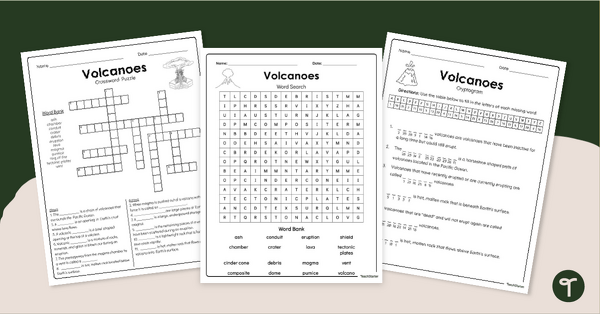
Free Volcano Worksheets
Download a set of free volcano worksheets to introduce your students to vocabulary and concepts related to volcanoes and volcanic disasters.
- Plus Plan
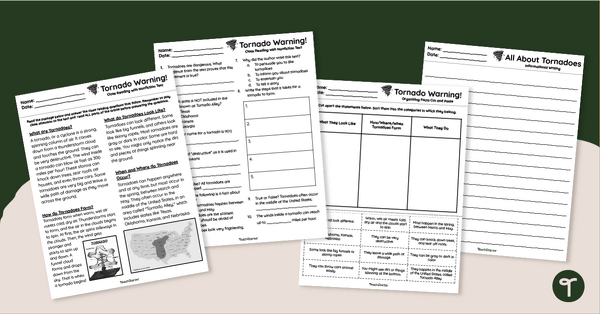
Tornado Worksheets - Informational Writing (2nd Grade)
Use our printable tornado worksheets and organizers to teach 2nd grade informational writing lessons.
- Plus Plan
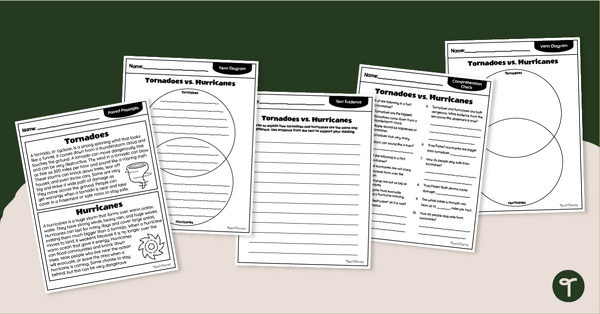
Compare and Contrast - Tornadoes and Hurricanes Worksheet Pack
Compare and contrast tornadoes and hurricanes with a set of printable paired passage reading worksheets.
- Plus Plan
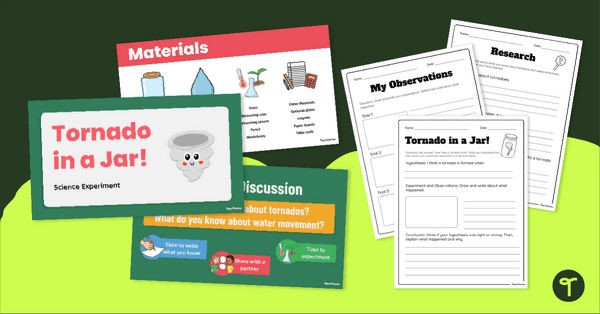
Tornado in a Jar Science Experiment
Create a Tornado in a Jar with an interactive science experiment slide deck and Tornado in a Jar Science Experiment Worksheets.
- Free Plan
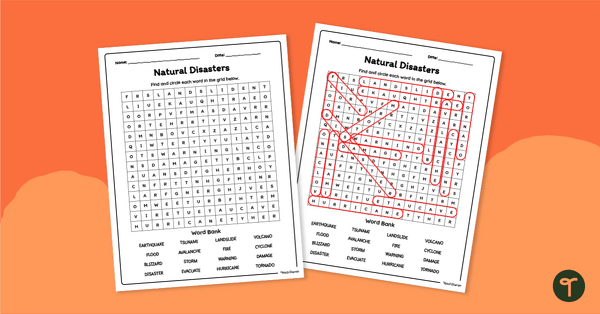
Natural Disasters Word Search
Use a Natural Disasters word search to introduce your students to the vocabulary surrounding these destructive acts of nature.
- Plus Plan
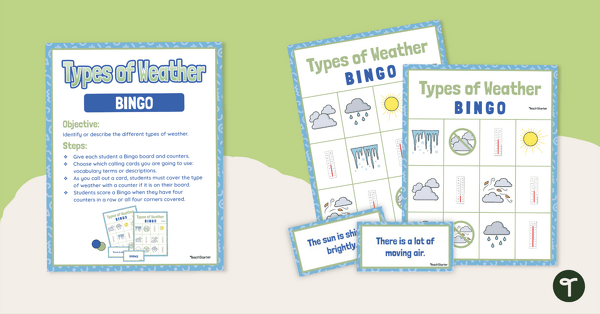
Types of Weather Bingo
Identify basic weather vocabulary terms such as windy, cloudy, snowy, cold, etc., with an exciting game of Bingo!
- Plus Plan

All About Clouds – Instructional Slide Deck
Teach your students about the different types of clouds with this 19-slide instructional slide deck.
- Plus Plan

Cookie Erosion Experiment
Discover the effects of water erosion with a printable Cookie Erosion Experiment for kids!
- Plus Plan
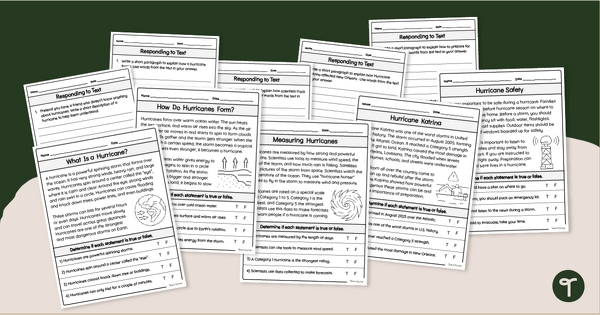
Hurricane Worksheets - Reading Response Activity Pack
Teach your 2nd graders about hurricanes with printable Hurricane Worksheets and constructed response activities.
- Plus Plan
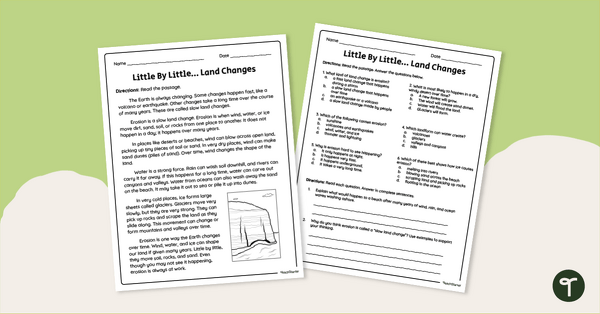
Slow Land Changes Worksheet
Explore erosion with a printable Slow Land Changes Worksheet for second graders.
- Plus Plan
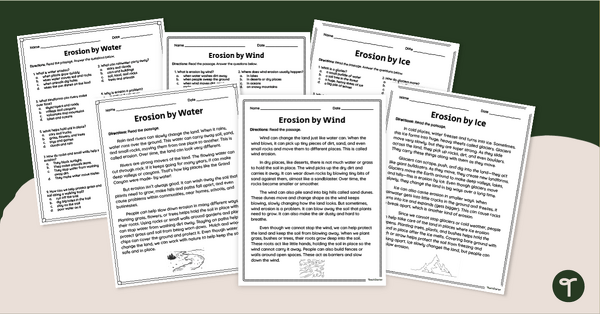
Science Comprehension - Erosion Sheet Bundle (2-4)
Download a printable Erosion Sheet for 2nd grade to teach your little learners about wind, water, and ice erosion.
- Plus Plan
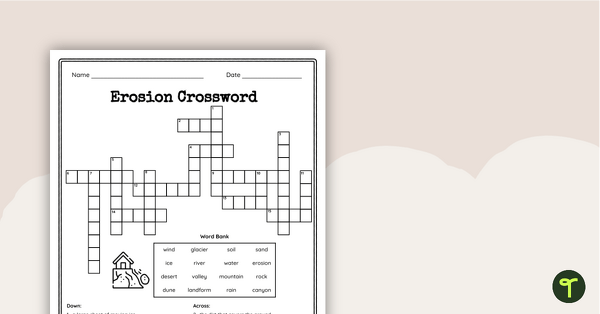
Erosion Crossword Puzzle
Review vocabulary related to erosion with a printable Erosion Crossword Puzzle and answer key.
- Plus Plan

Slow & Fast Land Changes Worksheet - Cut and Paste
Use a Slow & Fast Land Changes worksheet to discover events that cause changes to the Earth’s surface.
- Plus Plan
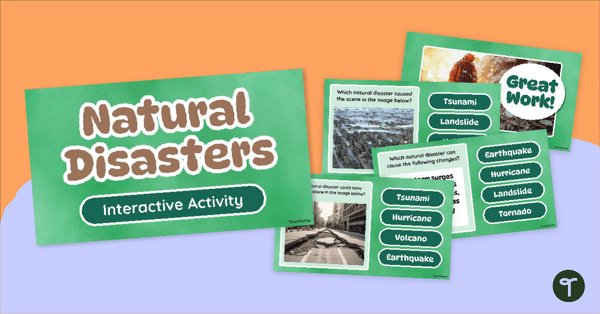
Natural Disasters Game - Interactive
Play an interactive Natural Disasters Game to review the effects of natural disasters, such as tornadoes, tsunamis, hurricanes, earthquakes and volcanoes.
- Plus Plan
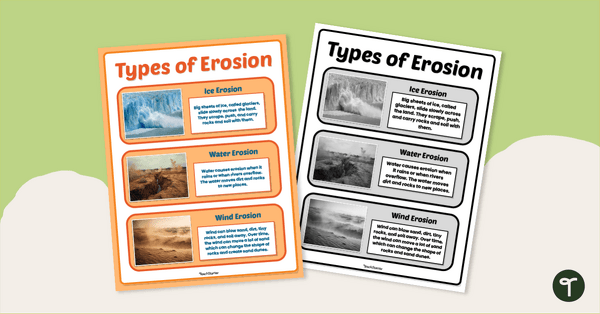
Soil Erosion Poster
Discover how wind, water, and ice change the Earth’s surface with a printable Soil Erosion Poster.
- Free Plan
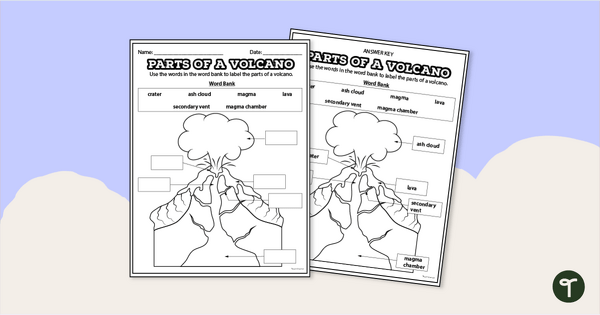
Diagram of a Volcano - Labeling Worksheet
Label the diagram of a volcano with a printable volcano worksheet.
- Plus Plan
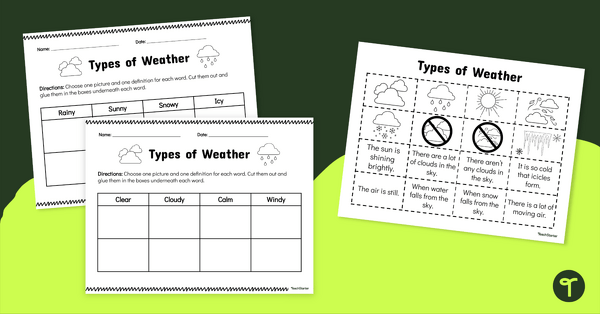
Types of Weather – Cut and Paste Worksheet
Use this cut-and-paste science worksheet to match a picture and description with each weather condition.
- Plus Plan
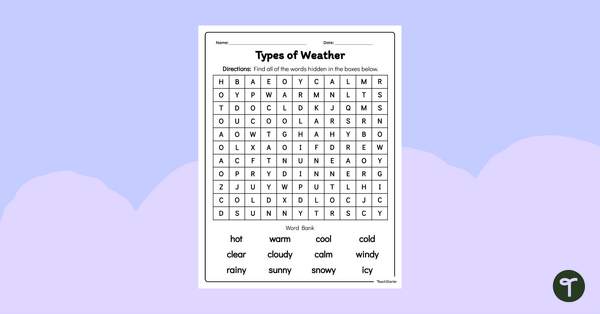
Types of Weather – Word Search
Review science vocabulary terms with an engaging weather word search.
- Free Plan
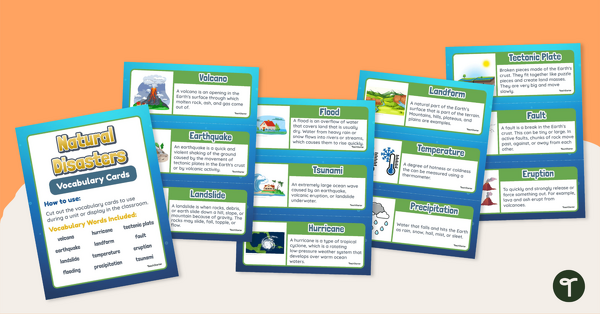
Natural Disasters – Vocabulary Cards
Reinforce science vocabulary in your classroom with this set of free word wall cards that focus on natural disasters.
- Plus Plan
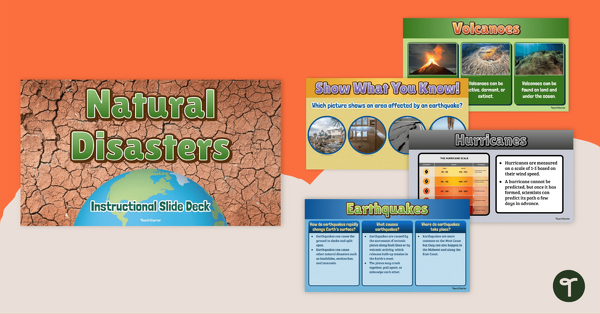
Natural Disasters – Instructional Slide Deck
Investigate rapid changes to Earth's surface and other natural disasters such as volcanic eruptions, earthquakes, and landslides with this instructional slide deck.
- Free Plan
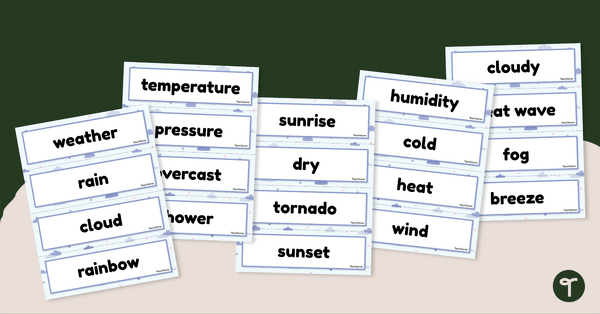
Weather Word Wall Vocabulary
Use this teacher-created weather resource to teach weather vocabulary. Build a word wall with your students during your weather lessons.
- Plus Plan
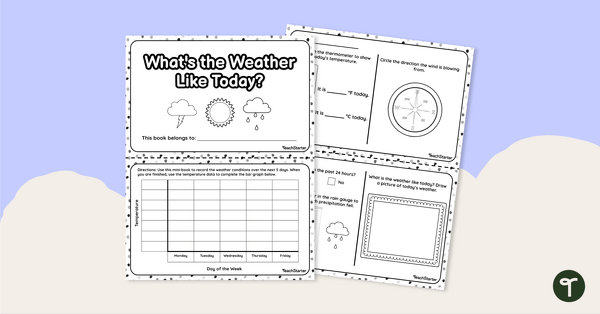
What's the Weather Like Today? – Mini-Book
Measure, record, and graph weather information with a printable mini-book.
- Plus Plan
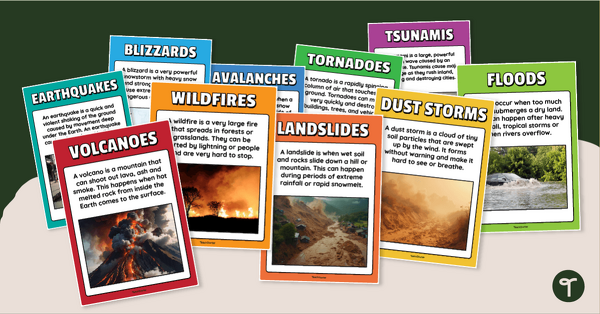
Natural Disaster Posters With Information
Introduce and explain different types of natural disasters with printable natural disaster posters.
- Plus Plan
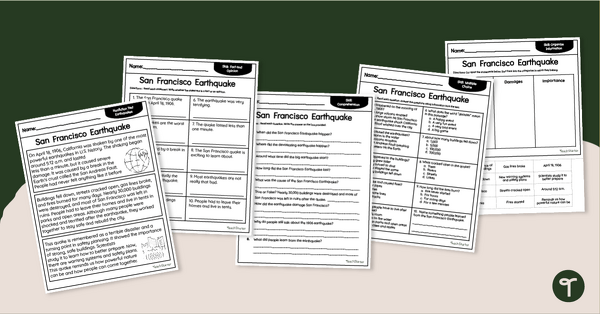
San Francisco Earthquake Activity Sheets
Expand reading comprehension, science, and history knowledge with a San Francisco Earthquake Activity pack.
- Plus Plan

Erosion PowerPoint
Use this Erosion PowerPoint to teach your second and third graders about the way erosion changes the Earth’s surface.
- Plus Plan
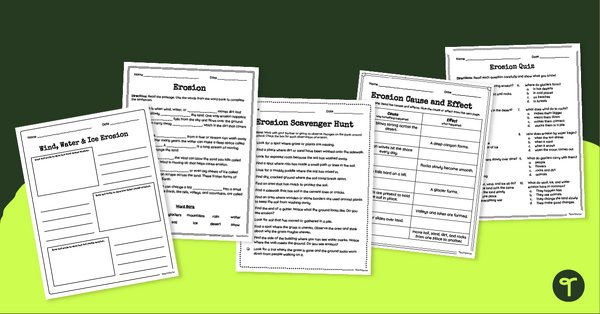
Erosion Worksheets for 2nd Grade
Download printable 2nd grade Erosion Worksheets to pair with your erosion lessons on changes to the Earth’s surface.
- Plus Plan
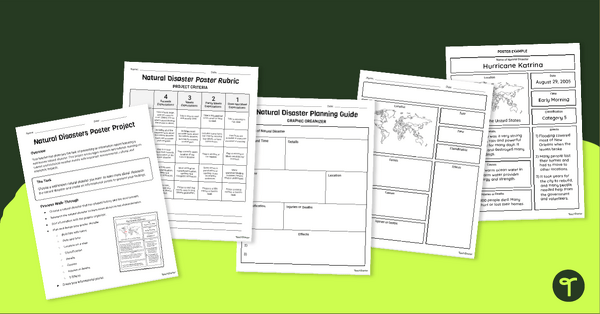
Natural Disasters Project
Assign a natural disaster project to engage your students in researching and creating a natural disaster poster about a historical event.
- Plus Plan
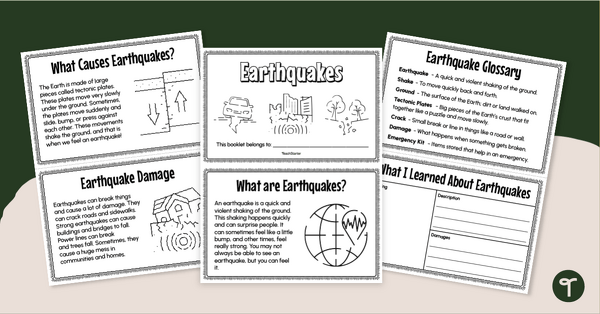
Earthquake Booklet for Kids - 2nd Grade
Explore earthquakes, their causes, effects, and how to prepare for them with a printable Earthquake booklet.
- Plus Plan

2nd Grade Hurricane Worksheets - Reading Comprehension
Read and learn about hurricanes with our 2nd Grade Hurricane Worksheets resource pack.
- Plus Plan

Natural Disasters – Printable Puzzles for 3rd Grade & 2nd Grade
Match pictures and facts of various natural disasters with this set of printable science puzzles.
- Plus Plan
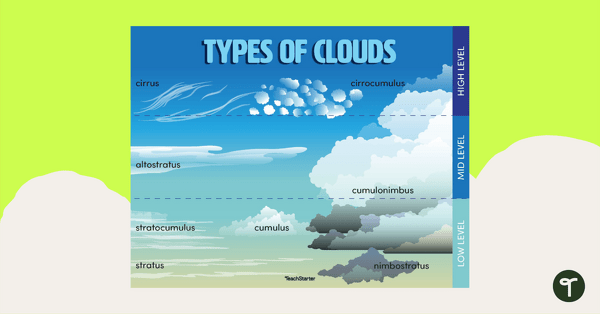
Clouds and Their Position – Poster
Learn about the different types of clouds and their position within the atmosphere with this printable poster.
- Plus Plan
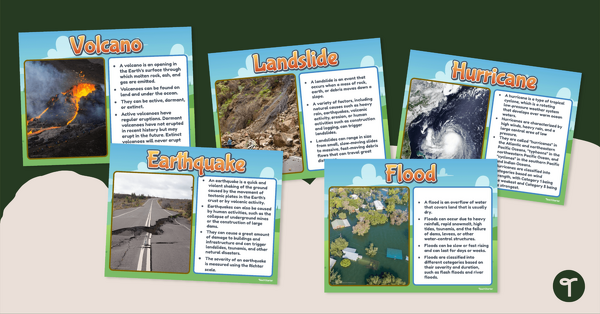
Natural Disasters – Poster Pack
Display information about different types of natural disasters with this poster pack.